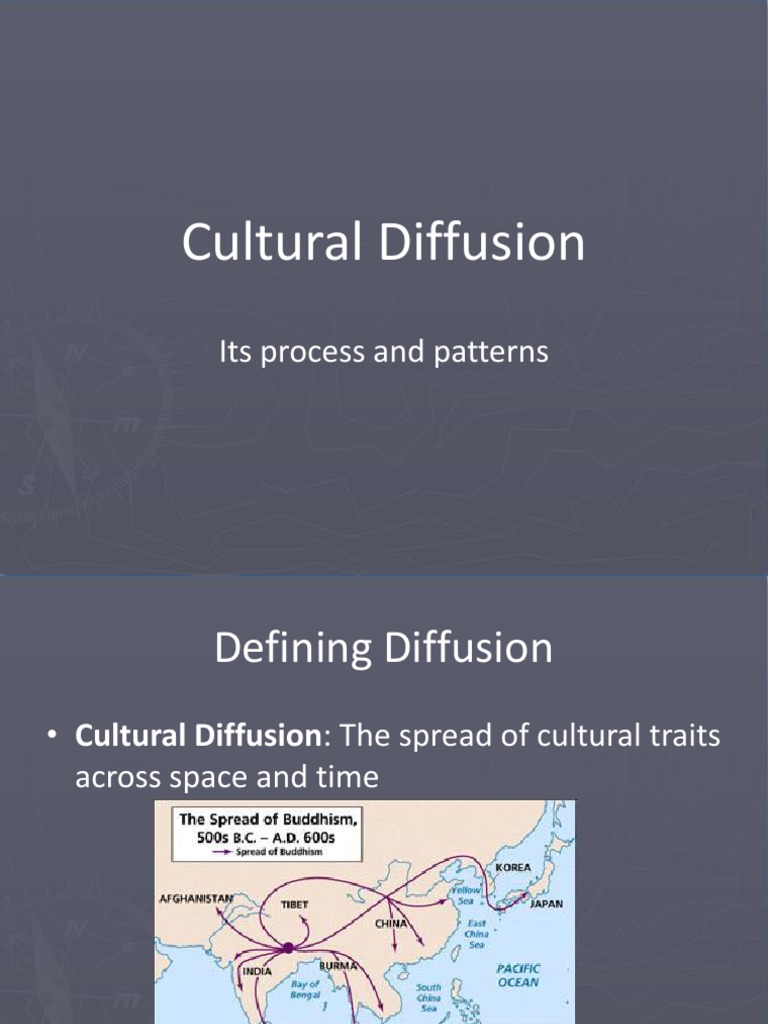Cultural diffusion is a concept that encapsulates the processes through which cultural elements, such as ideas, customs, and technologies, disseminate from one society or group to another. This phenomenon occurs across various scales and can be observed in a multitude of contexts, from the sharing of agricultural practices to the global proliferation of technology and artistic expressions. Understanding the cultural diffusion cycle is essential for unpacking the complex interconnections that define human societies.
The cultural diffusion cycle can be visualized as a series of stages. It often begins with innovation, a spark ignited by human creativity. This stage is characterized by the genesis of new ideas or practices within a specific cultural framework. Innovations may arise due to necessity, curiosity, or the collective quest for improvement. For instance, in agricultural societies, innovations may emerge in response to environmental challenges. The introduction of drought-resistant crop varieties demonstrates how need drives creativity, thus initiating the diffusion cycle.
Once an innovation takes root within its culture, it enters the dissemination phase. This stage emphasizes the spread of cultural elements across various boundaries, which can be geographic, social, or temporal. Dissemination is not a linear process; it can encounter numerous barriers such as language, belief systems, and local customs. The effectiveness of this transfer often hinges on the avenues of communication available, which in today’s globalized world, includes the internet, migration, and trade. Just as water finds its way through cracks in the earth, cultural elements often exploit existing pathways, which can facilitate or hinder their movement.
A pivotal aspect of the dissemination phase is the role of cultural intermediaries. These actors — be they merchants, travelers, or even modern influencers — play an essential role in bridging divides between disparate cultures. Their motivations can vary; some may seek to profit from new markets, while others may be driven by curiosity or altruism. Importantly, cultural intermediaries carry not just the artifacts of culture, but narratives and meanings, often reshaping them in the process. As such, the introduction of a new technology or artistic style is rarely a straightforward transfer; it is a transformation that can engender hybrid forms, which are emblematic of the cultural interactions at play.
The subsequent stage in the cycle involves acceptance and adaptation. This phase becomes apparent when a culture adopts a new idea or practice and modifies it to fit within its unique context. Adaptation can occur at multiple levels, from small communities to entire countries. A notable example is the global adoption of spices in culinary practices. While curry originated in South Asia, its incorporation into various cuisines worldwide has led to local adaptations, producing distinct flavors and dishes. This highlights the fluidity of cultural elements; they mutate and evolve as they mesh with local traditions and practices.
However, adaptation isn’t always smooth. Resistance can arise, rooted in a desire for cultural preservation or fear of the unknown. Such tensions often lead to cultural friction, where the values associated with tradition clash with the allure of novelty. This primal conflict between conservation and change is a testament to the complex emotional landscapes at play within communal identity.
Following adaptation, the cycle proceeds to integration, which signifies a deeper embedding of the new cultural elements into society. At this juncture, innovative practices may become normative, influencing everything from political policies to educational curricula. For example, the integration of renewable energy technologies reflects societal shifts towards sustainability; as communities increasingly recognize environmental imperatives, they embrace innovations that align with those objectives. This integration can significantly alter social structures, reshaping power dynamics and economic relations in the process.
Moreover, this cycle is perpetuated by feedback loops. As cultural elements are synthesized, they can spark new innovations, leading to a continuous cycle of cultural evolution. This is exemplified in the technological realm, where advancements in communication technologies continuously reshape how cultures interact. The rise of social media platforms has facilitated unprecedented exchanges between disparate groups, fostering a dynamic that could not have previously existed. Such interactions can lead to a profound interdependence, enriching cultural landscapes and diversifying experiences.
The cultural diffusion cycle is not devoid of challenges. Globalization has ushered in complexities, provoking discussions about cultural imperialism and the homogenization of cultures. As dominant cultures exert considerable influence, there are concerns regarding the erasure of local customs and traditions. This discourse typically emphasizes the need for cultural sensitivity and awareness, advocating for practices that encourage respect and appreciation for cultural diversity.
In conclusion, the cultural diffusion cycle encapsulates a multifaceted process that is central to human existence. From innovation through integration, each stage contributes to the continual evolution of societies. While innovations emerge from creativity and necessity, their dissemination is influenced by an array of factors, including intermediaries, social structures, and prevailing ideologies. As cultures interweave, they generate new forms of expression, enabling societies to adapt to changing realities. In an increasingly interconnected world, understanding this cycle becomes paramount, not only for appreciating the richness of human culture but also for addressing the challenges that accompany such profound interrelations. The onus lies in fostering a landscape that values diversity while encouraging the constructive elements of cultural interplay.
